| Term |
Source |
Meaning |
Illustration |
| Abacus |
Lewis, F.H., Vol VI, P 236 |
 The Abacus, (shown here in base) was an ancient mathematical tool used for calculation. It is used in these arms to refer to accounting, but may also allude to mathematics in general. The Abacus, (shown here in base) was an ancient mathematical tool used for calculation. It is used in these arms to refer to accounting, but may also allude to mathematics in general. |
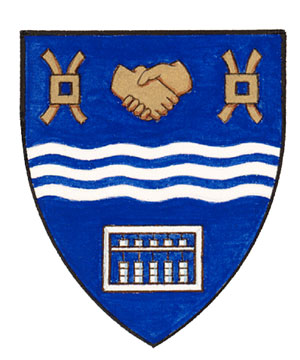 |
| Acacia Tree |
Ethell, D.S.
Vol VI, P 54 |
The Acacia tree is characteristic of the African savannah. It is used here to allude to the grantee’s service in Africa. It is a metaphor for aiding and protecting others. |
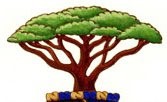 |
| Acadia, Chief of |
Babineau |
A chief tierced in pale Azure, Argent and Gules, in the dexter compartment a mullet Or. |
 |
| Acadia, Flag of |
Boudreau |
A banner tierced in pale Azure, Argent and Gules, in the canton a mullet Or. |
 |
| Acadia, Star of |
Société nationale de l’Acadie |
This term represents Azure a mullet Or. |
 |
| Aerial Bomb |
Setchell, W.P.
Vol V, P 451 |
The Aerial Bomb is derived from the badge of the Royal Engineers’ Bomb Disposal unit in WW2, in which the grantee served. |
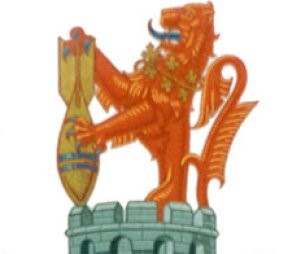 |
| Airedale Terrier |
MacLeod, J.A.
Vol V, P 179 |
The Airedale is a popular breed of dog, and the largest of the terrier breeds. It is noted for the qualities of loyalty and tenacity. |
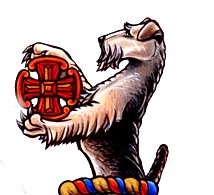 |
| Alligator |
Bishop’s University, Lennoxville, Quebec.
(Badge)
Vol II, P 276 |
The University’s badge consists of crossed croziers behind a purple alligator wearing red bishop’s gaiters – an heraldic pun on the two words. |
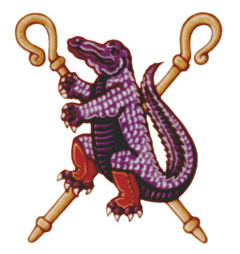 |
| Anglé |
Brooks |
The blazon states, "Azure four anchors conjoined in cross on a single ring and anglé of four smaller anchors all flukes outward". A more traditional alternative might be to describe the four smaller anchors as being in saltire. |
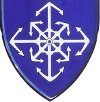 |
| Anke |
Rigby, F.N.
Vol V, P 128 |
The Anke (seen here in the chief) is an Egyptian symbol of life or healing. It refers here to the grantee’s profession as a physician. |
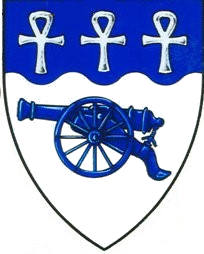 |
| Annuli, Concentric |
Eppich, H.M.
Vol VI, P 222 |
The Concentric Annuli or rings are inspired by basic schematic drawings for a cyclotron. This relates to the grantee’s company that manufactured components for the world’s largest cyclotron. The rings may also refer to ripples produced when a stone enters water. |
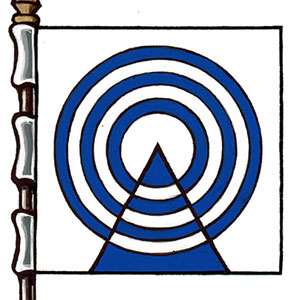 |
| Ansul |
Pharmacy Faculty, U. of T. |
A term used in one or more Canadian grants to refer to what is more traditionally known as a balance or scales. Used in many cases by persons or institutions associated with the legal or pharmaceutical professions. It is understood that the term is no longer used by the CHA. |
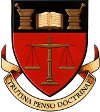 |
| Ansul, Double |
Bar Association, Canadian |
Ansul is an antique word for what is more usually termed a balance. In the illustrated use, it shows a balance supporting two others, meaning that the Bar Association represents lawyers from two different legal traditions in Canada – common law and civil law. |
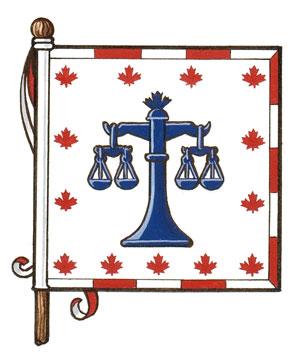 |
Apollion
(Man-Lion) |
Robert McCausland Stained Glass Company.
Vol II, P 209 |
 The dexter supporter of these arms shows the bare torso of a man conjoined with the hindquarters of a lion – what most ordinary folk might call a Man-Lion. It is in fact blazoned as an Apollion. This is a classical reference to the devotees of the Greek god Apollo, son of Zeus and god of the sun, medicine, music and the arts. The dexter supporter of these arms shows the bare torso of a man conjoined with the hindquarters of a lion – what most ordinary folk might call a Man-Lion. It is in fact blazoned as an Apollion. This is a classical reference to the devotees of the Greek god Apollo, son of Zeus and god of the sun, medicine, music and the arts. |
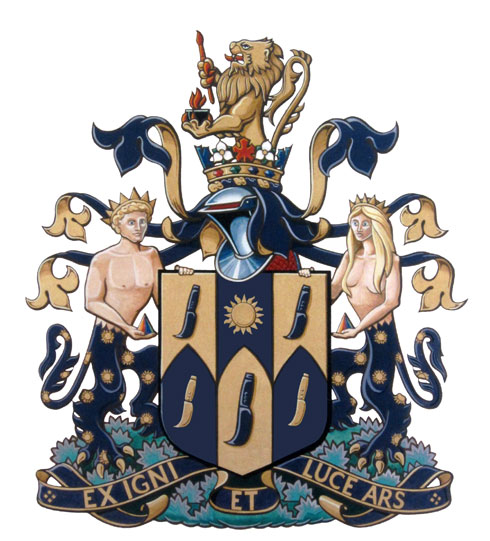 |
| Apollo |
Arts and Letters Club, Toronto. Vol V, P 175 |
 In Greek mythology, Apollo was the god of art and music. In this context, the figure alludes to importance of classical culture. In Greek mythology, Apollo was the god of art and music. In this context, the figure alludes to importance of classical culture. |
 |
| Apple Blossom |
Town of Creston, BC (Badge) Vol V, P314 |
 The Apple Blossom alludes to the historic fruit-tree industry of the area of Creston, BC. It may also refer to the season of Spring. The Apple Blossom alludes to the historic fruit-tree industry of the area of Creston, BC. It may also refer to the season of Spring. |
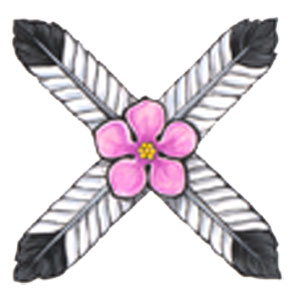 |
| Arbutus Tree |
Gen-Find Research Associates
(Flag)
Vol V, P550 |
The Arbutus Tree is Canada’s only broad-leaf evergreen. As a very large, many-branched tree, it is used here to suggest the idea of Genealogy. |
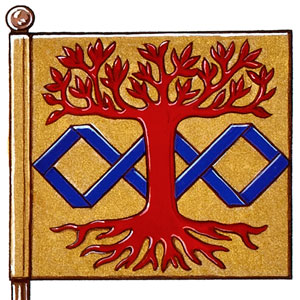 |
| Archer in Highland Dress |
Comrie. R.I.
Vol III, P 69 |
The archer is taken from other Comrie arms, and recalls the grantee’s Scottish ancestry. |
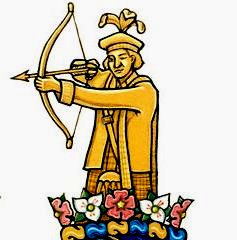 |
| Arctic Char |
Elias, E.A.
Vol VI, P 140 |
 The Arctic Char shown here as the sinister supporter, is a typical fish of the Canadian North. The Arctic Char shown here as the sinister supporter, is a typical fish of the Canadian North. |
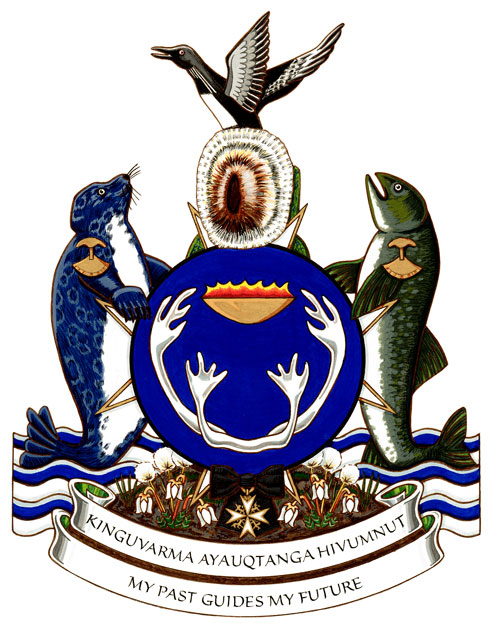 |
Arctic Fox
(Blue Phase) |
Roberts, V.
Vol II, P 60 |
The Arctic fox (its fur white in winter, bluish-grey in summer) is a typical animal of the Canadian Arctic regions. |
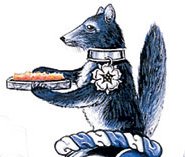 |
| Arctic Tern |
Richelieu International.
(Badge)
Vol V, P 70 |
The Arctic Tern, a seabird of the Canadian Arctic, is known for its incredible annual migration to the Antarctic. |
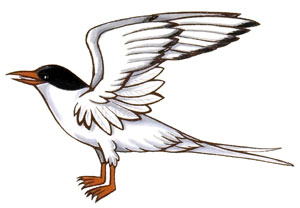 |
| Argonaut |
Army Cadet Camp Argonaut, Argonaut, N.B.
(Badge).
Vol II, P 402 |
 The badge depicts the mythical hero Jason, who led the Argonauts in their quest for the Golden Fleece. It symbolizes the name of the Army Cadet summer camp plus the idea of leadership. The badge depicts the mythical hero Jason, who led the Argonauts in their quest for the Golden Fleece. It symbolizes the name of the Army Cadet summer camp plus the idea of leadership. |
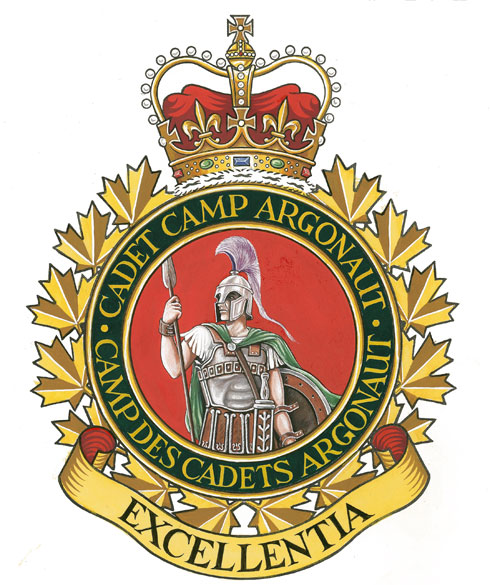 |
| Ark of the Covenant |
Grand Lodge of Quebec, AF & AM.
Vol IV, P 283 |
The Ark of the Covenant is said to be the container for the tablets of the Ten Commandments, placed in the Temple of Jerusalem. |
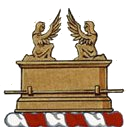 |
| Armadillo |
Ripstein, H.B.
Vol IV, P 277 |
The Armadillo is a New World mammal with a leathery armoured shell. It originated in South America, but has migrated as far north as the southern U.S. They are used heraldically to allude to military armour. |
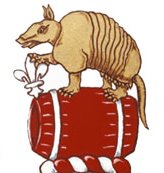 |
| Arquebus |
Picard, M.
(Banner)
Vol IV, P 303 |
The Arquebus was a forerunner of the musket (15th –17th centuries). It refers here to the metal-casting trade, used at one time to make musket barrels. |
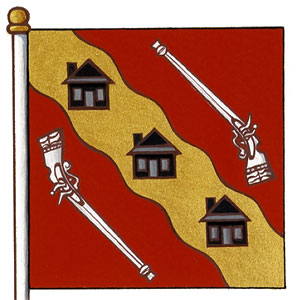 |
| Arrowhead Érablé |
17 Wing, RCAF, Greenwood, NS
(Badge)
Vol III, P 401 |
 The Arrowhead alludes to the rapid flight of the Wing’s aircraft. The maple-leaf decoration of the arrow’s extremities (Érablé), is a clear reference to Canada. The Arrowhead alludes to the rapid flight of the Wing’s aircraft. The maple-leaf decoration of the arrow’s extremities (Érablé), is a clear reference to Canada. |
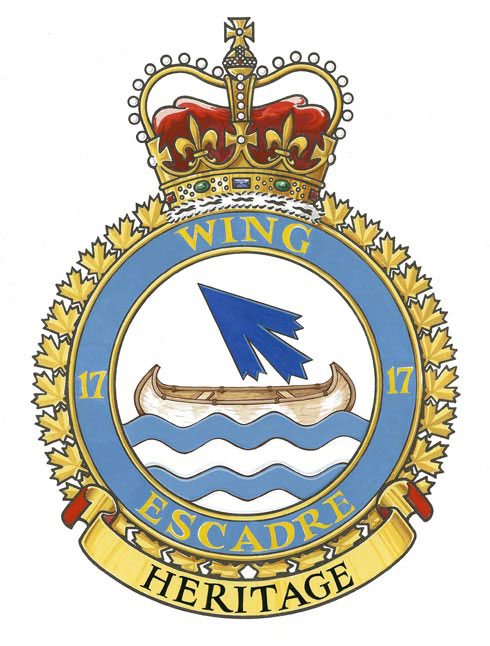 |
| Artillery Shell |
Town of Ajax, ON
Vol III, P 348 |
The Artillery Shell refers to the fact that the Town of Ajax grew up around a plant making military shells in 1941. |
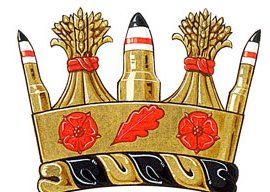 |
| Asterisk |
Scott, R.L. |
 The term "conjoined in asterisk" has been coined appropriately to describe three billets so arranged as to form the cross illustrated, often used in connection with paramedical or rescue services (see also Star of Life). The term "conjoined in asterisk" has been coined appropriately to describe three billets so arranged as to form the cross illustrated, often used in connection with paramedical or rescue services (see also Star of Life). |
 |
| Asticou (Algonquian) |
Can. Museum of Civilization. Vol I, P 20 |
 Asticou, the figure shown as the sinister supporter, is the name of an Algonquian water spirit. Asticou, the figure shown as the sinister supporter, is the name of an Algonquian water spirit. |
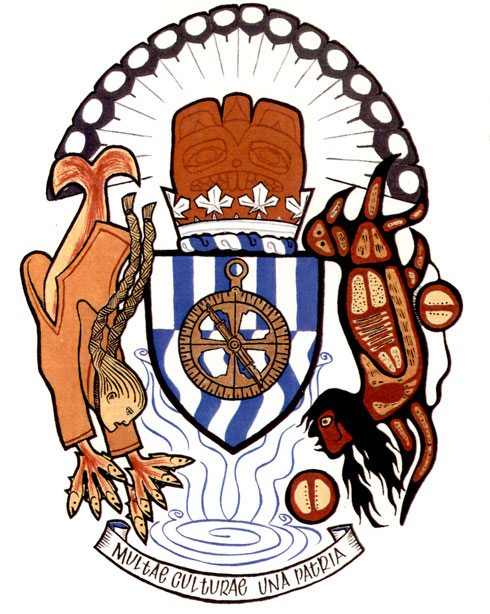 |
| Astrolabe |
Canadian Museum of Civilization |
The instrument of the ancient explorers, the astrolabe has appeared on a number of Canadian grants. |
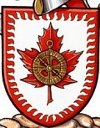 |
| Athena |
Arts and Letters Club, Toronto. Vol V, P 175 |
 In Greek Mythology, Athena was the goddess of wisdom. In this context, the figure alludes to the importance of classical culture. In Greek Mythology, Athena was the goddess of wisdom. In this context, the figure alludes to the importance of classical culture. |
 |
| Atom |
Van Horne, W.L. |
 The atom is, of course, a symbol of the field of atomic physics. In the illustrated form (an atom with four orbiting electrons), it is also a symbol of electronics. The atom is, of course, a symbol of the field of atomic physics. In the illustrated form (an atom with four orbiting electrons), it is also a symbol of electronics. |
 |
| Aurora Borealis |
C.F. Base, North Bay (Badge) Vol V, P 527 |
 These arms are blazoned –“Argent the southern gateway to the City of North Bay set on a grassy mound proper surmounting the aurora borealis Or”. The Aurora Borealis symbolizes the idea of the north. These arms are blazoned –“Argent the southern gateway to the City of North Bay set on a grassy mound proper surmounting the aurora borealis Or”. The Aurora Borealis symbolizes the idea of the north. |
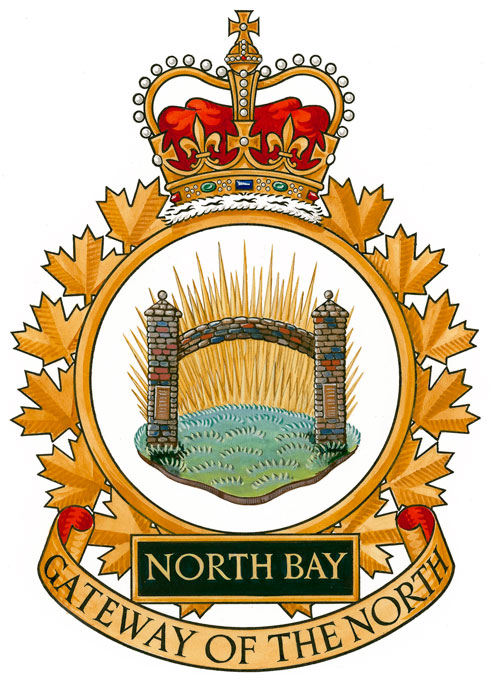 |



